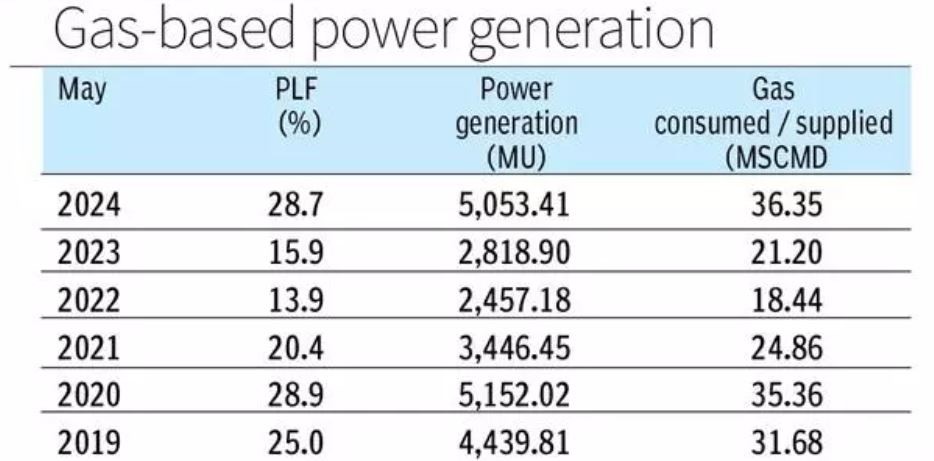Heat waves push gas-based power plants capacity to a five-year high in May 2024.

|
Advantages of Gas Based Power Plants |
|
|
Disadvantages of Gas Based Power Plants |
|
How gas based power plants differ from coal based plants?
|
Gas-Based Plants |
Coal-Based Plants |
|
|
Fuel Source |
Gas |
Coal |
|
Fuel Supply |
Generally, more stable supply |
Susceptible to supply chain disruptions |
|
Efficiency |
Higher efficiency in converting fuel to electricity |
Lower efficiency compared to gas-based plants |
|
Emissions |
Lower emissions (CO2, SOx, NOx) |
Higher emissions, especially CO2 |
|
Environmental Impact |
Generally considered cleaner |
Higher environmental impact due to emissions and mining |
|
Flexibility |
More flexible for rapid startup and shutdown |
Less flexible, longer startup and shutdown times |
|
Power Output |
Typically, lower power output per unit compared to coal |
Higher power output per unit |
The International Energy Agency forecasts India's gas demand to grow by 7% in 2024, while the Gas Exporting Countries Forum predicts a 6% increase.
